What is a lake?
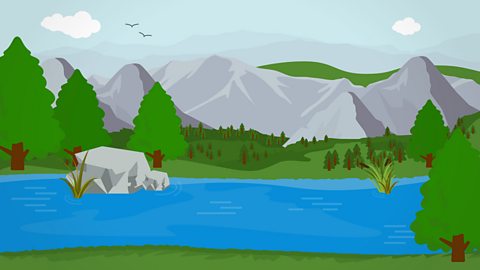
A lake is a body of water surrounded by land, sometimes with a river flowing into or out of it. Lakes can be found in every country of the UK.

Watch: Explore the lakes of the UK
Learn about the UK's biggest lake Lough Neagh.
Guess where I am!
It might look like the sea, but this is actually a huge lake!
My name is Charlie, and today I’m at Lough Neagh in Northern Ireland to find out everything I can about lakes.
“Lough” is the Irish word for “lake”, and Lough Neagh is actually the biggest lake in the UK, and when I say big, I mean BIG.
It’s about 30 km long, 12 km wide, and 125 km around the shoreline. It contains over 3 and a half trillion litres of water!
Lough Neagh is an important “reservoir” - which means it’s used as a water supply. Turn on a tap in hundreds of thousands of homes in Northern Ireland, and this is where the water comes from.
All kinds of birds, animals and fish live here, but Lough Neagh is most famous for eels!
Every year, 400 tonnes of Lough Neagh eels are shipped off to other countries where there must be a lot of people who like to eat them.
Scientists think that Lough Neagh was formed millions of years ago.
Massive cracks in the Earth’s crust - called “faults” - caused a large area to sink down and make a huge basin.But not all lakes are made by the forces of nature.
Ladybower Reservoir in the Peak District, in Derbyshire, was made by engineers.
More water was needed for the cities nearby - Sheffield, Nottingham, Derby and Leicester.
So this long, deep and narrow valley was chosen as the perfect place to build a reservoir.
A huge and very thick wall called a “dam” was built across the valley to trap the water of the River Derwent.
The reservoir was constructed between 1935 and 1943, but it took another two years for it to fill up completely.
People visit Ladybower Reservoir to walk or cycle along the shore, to fish in the water, go birdwatching…
…and at Lough Neagh you can do all that and go sailing and swimming too!
You could find out where your nearest lake is, and what there is to do there.
I’ve had a great day, but now I’m off for my dinner. Bye!
I hope it’s not eels…
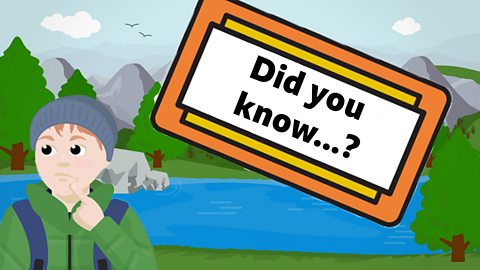
Key facts about lakes
Lakes:
have different sizes and depths
are natural or man-made
contain saltwater or freshwater
disappear over time as they fill with sediment
are used by animals
provide water, food and a way of travelling for people
if formed by dams, can be used to make electricity
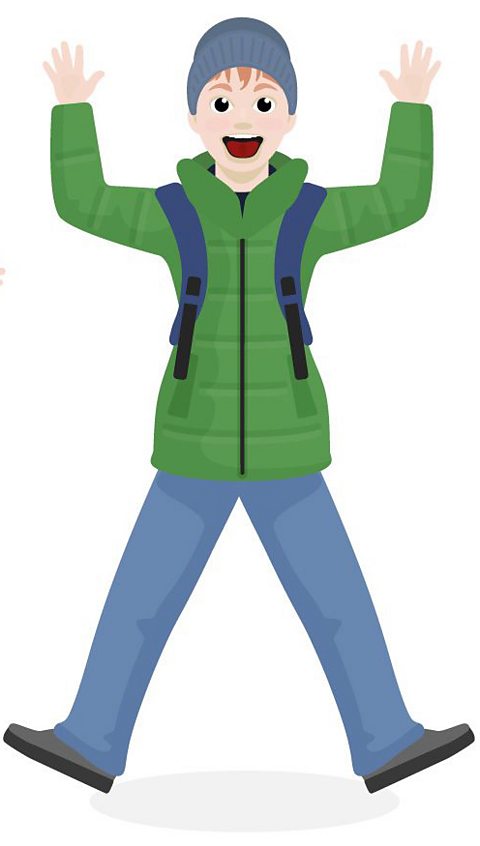
The water in lakes can come from:
rain
snow
melting ice
groundwater seepage
streams and rivers
the sea - saltwater lakes

Lakes have different names in each country of the UK:
- In Scotland they are called lochs.
- In Northern Ireland they are called loughs.
- In Wales they are known as llyns.
- In England they are known as lakes.
Lakes in the UK
In the UK, there are many lakes. Some of them are natural lakes, while others are man-made.
The largest freshwater lake in the UK by area is Lough Neagh in Northern Ireland. The deepest freshwater lake in the UK is Loch Morar in Scotland.
The Lake District in England is well known for its many lakes, mountains, valleys, and bogs.
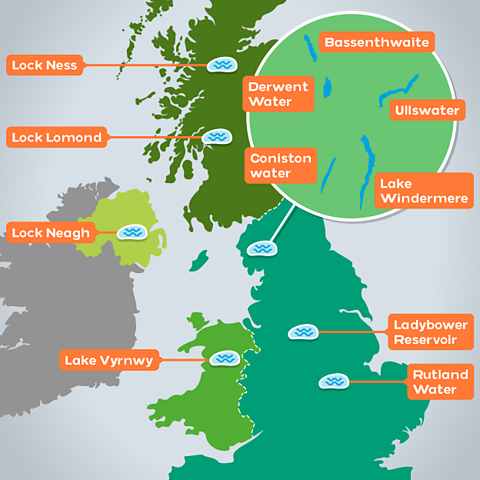
Types of lakes
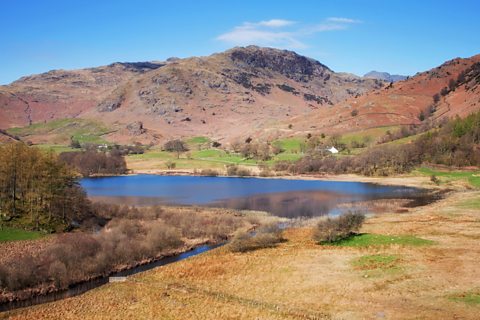
Tarns
When small glaciers form in hollows on the sides of mountains they make the hollows deeper by eroding them until a basin is created. The basins are called corries and are usually surrounded by hillier areas on three sides with a lower area on one side where the water flows out. These are known as tarns.

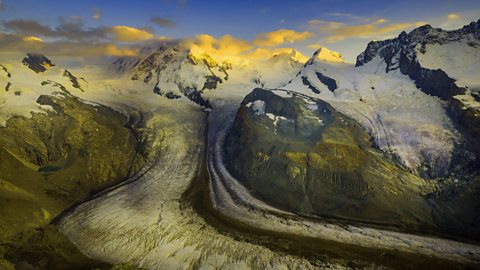
Ribbon lakes
Glaciers flowed along river valleys and widened them into U-shaped valleys. This carved out long valleys through the softer rock, and the basins filled with water. These lakes are called ribbon lakes. Pieces of rock, called moraine, are left behind which can create a dam.
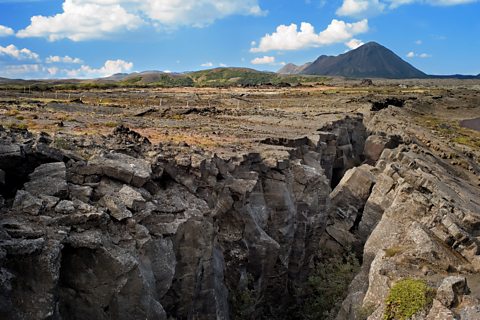
Rift/tectonic lakes
The Earth’s crust is divided into pieces called tectonic plates. Where the crust is broken, it can create deep cracks called faults. Faults can fill with rainwater or water from a stream.
If this break happens near the ocean, part of the water can be trapped by a part of the crust, forming a saltwater lake.


Artificial lakes
When a dam is built on a river, it blocks its stream and creates an artificial lake. It can be used as a reservoir to store water for people. Ladybower Reservoir is an example of an artificial lake that was made by flooding a river valley. The villages in the valley were lost to flooding.
Plants and wildlife in lakes

Lakes are home to a wide variety of plants and animals; some birds only visit the lakes to breed or during migration.
Many small animals, such as dragonflies, snails, crayfish and frogs lay their eggs on the plants around lakes.
Turtles and a variety of bugs and beetles can be found in lakes.
Some of the more common plants around lakes are mosses, reeds and ferns. Floating plants such as waterlilies grow in the lakes.
Famous UK lakes
Two of the most famous lakes in the UK are Windermere in the Lake District and Loch Ness in Scotland.
Lake Windermere
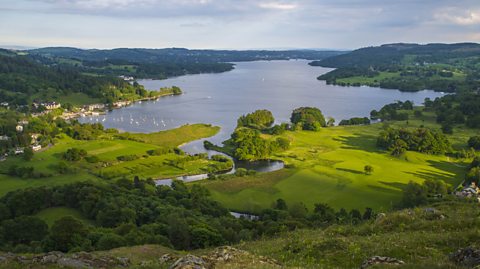
Lake Windermere is a ribbon lake, formed in a valley carved out by a glacier. It is the largest lake in England, 17 km long and 1.6 km wide.
Loch Ness
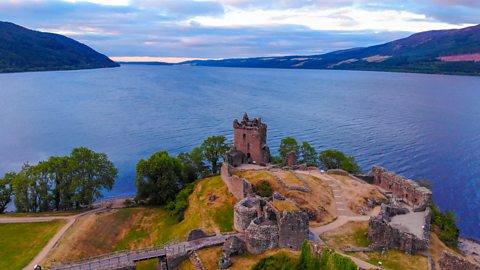
Loch Ness is a lake in the Scottish Highlands and similarly to Windermere, it sits in a valley carved out by glaciers.
It has formed above the Great Glen fault, where two pieces of the Earth’s crust, called tectonic plates, moved past each other.
With a length of 37km and the deepest point of 230m, it contains the most freshwater in the British Isles.
Activities
Gap fill: Lakes
Quiz: Types of lake
Bitesize Primary games. gameBitesize Primary games
Play fun and educational primary games in science, maths, English, history, geography, art, computing and modern languages.

More on Geography of the UK
Find out more by working through a topic
- count7 of 17
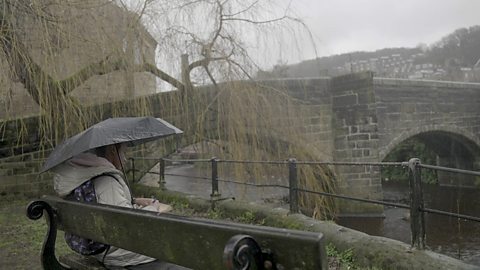
- count8 of 17
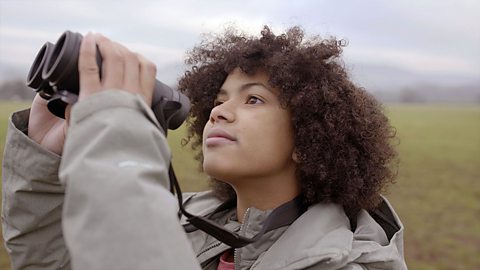
- count9 of 17

- count10 of 17

